Table of Contents
- When we think about air conditioning, we often picture the cooling unit itself or the thermostat on the wall. However, there’s a silent but crucial partner in ensuring that your air conditioning system operates effectively and efficiently
- The Importance of Air Conditioning
- The Purpose of Insulation
- Summer Cooling and Insulation
- Temperature Control
- Reduced Strain
- The Winter Role
- Types of Insulation
- Proper Installation Matters
- The Cost-Efficiency Equation
- Environmental Benefits
- Continuous Improvement
When we think about air conditioning, we often picture the cooling unit itself or the thermostat on the wall. However, there’s a silent but crucial partner in ensuring that your air conditioning system operates effectively and efficiently
insulation. In this article, we’ll explore the often-underestimated role of insulation in creating a comfortable indoor environment and promoting energy efficiency.
Insulation is a fundamental component of any well-designed building, yet its importance is often underestimated. In this article, we’ll delve deeper into the crucial role that insulation plays in creating a comfortable indoor environment and, perhaps more significantly, its far-reaching impact on promoting energy efficiency and sustainability.
Comfort and Insulation:
Proper insulation is akin to wrapping your home in a cozy blanket. It acts as a barrier that regulates temperature, preventing heat from escaping during the colder months and keeping excessive heat out during the warmer ones. This thermal resistance ensures that your indoor spaces remain comfortable year-round. No more shivering in the winter or sweltering in the summer – insulation helps maintain a consistent, pleasant temperature throughout your home.
Energy Efficiency:
Insulation is not only about comfort but also about financial savings and environmental responsibility. When your home is well-insulated, your heating and cooling systems don’t have to work as hard to maintain the desired temperature. This translates into lower energy consumption and reduced utility bills. In essence, insulation is your home’s energy-saving armor, helping you reduce your carbon footprint while saving money.
Environmental Impact:
Energy efficiency isn’t just about your wallet; it’s about the planet. The less energy your home consumes, the fewer greenhouse gas emissions are produced to generate that energy. By investing in quality insulation, you are actively contributing to a more sustainable future. Reduced energy consumption means fewer fossil fuels burned, which ultimately leads to cleaner air and a healthier environment for all.
Long-Term Benefits:
One of the often-overlooked advantages of insulation is its longevity. Once properly installed, it can last for decades, requiring minimal maintenance. This long-term performance not only ensures consistent comfort but also offers a sustainable solution, as fewer resources are needed for replacements or repairs.
Sound Insulation:
Insulation isn’t solely about temperature control; it’s also an effective sound barrier. Adequate insulation can minimize noise pollution, creating a more peaceful and serene indoor environment. Whether you live in a bustling city or a noisy neighborhood, insulation can help you enjoy the tranquility you deserve.
In conclusion, insulation is more than just an afterthought in construction or home improvement; it’s a cornerstone of comfort, energy efficiency and environmental responsibility. By understanding and appreciating its role, you can make informed decisions to enhance your living space, save money and make a positive impact on the planet. In the following sections of this article, we will explore different types of insulation, their benefits and how to choose the right insulation for your specific needs.
Looking for more insights? You’ll find them right here in our extended coverage: Building America Best Practices Series Vol. 14: Energy Renovations …
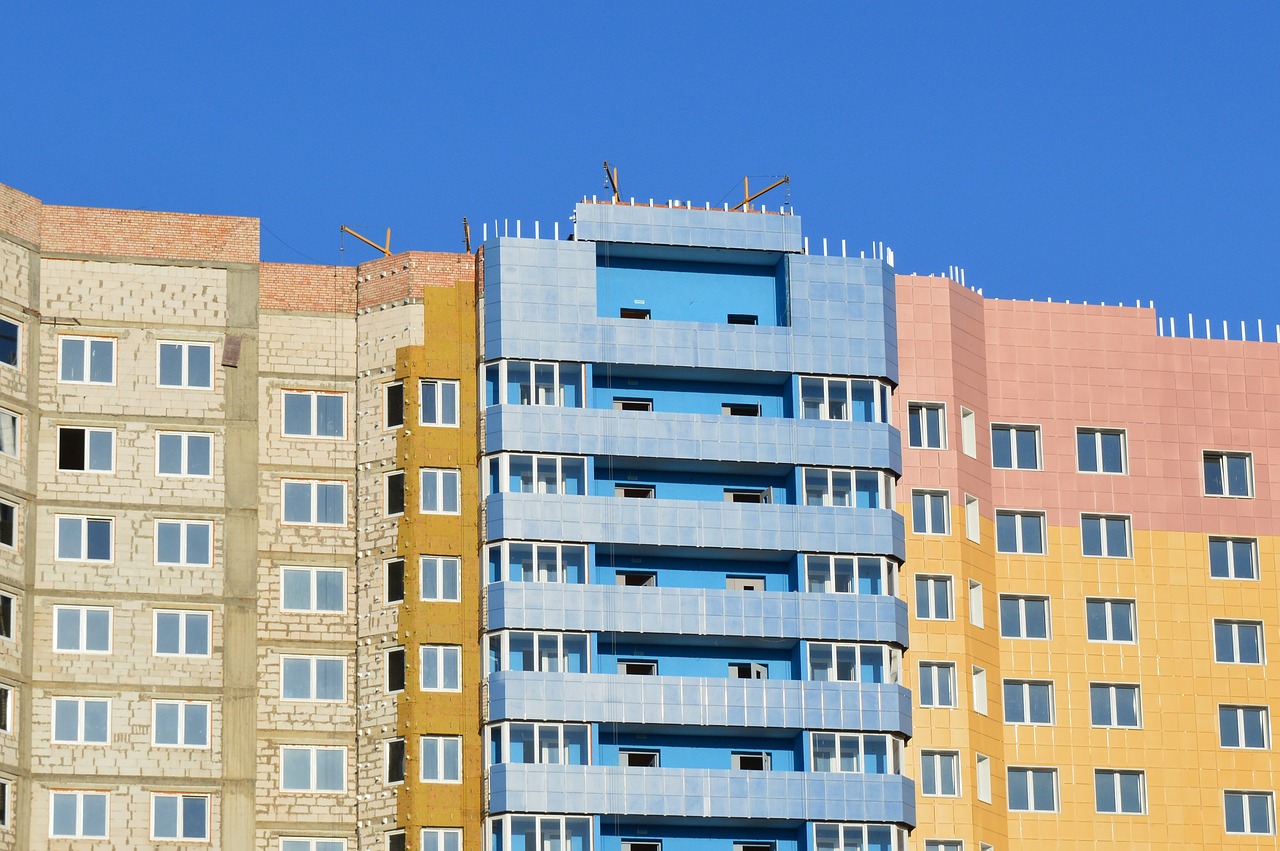
The Importance of Air Conditioning
Air conditioning is a lifeline during sweltering summers, providing respite from the heat and creating comfortable living and working spaces. However, achieving the desired comfort level while keeping energy costs in check depends on several factors, with insulation being a key player.
Air conditioning is a lifeline during sweltering summers, providing respite from the heat and creating comfortable living and working spaces. However, achieving the desired comfort level while keeping energy costs in check depends on several factors, with insulation being a key player. Let’s delve deeper into the critical role of insulation in optimizing your cooling experience and energy efficiency:
Thermal Barrier: Insulation acts as a thermal barrier, helping to keep the heat out during summer months. Properly insulated walls, ceilings and floors prevent the transfer of heat from the outdoors, reducing the workload on your air conditioning system. This means your AC unit doesn’t have to work as hard to maintain a comfortable temperature, resulting in lower energy consumption and cost savings.
Consistent Temperatures: Insulation helps maintain consistent indoor temperatures. Without adequate insulation, heat can infiltrate your living or working space, leading to uncomfortable temperature fluctuations. This can compel you to lower the thermostat further, increasing energy consumption. With effective insulation, you can enjoy a more stable and pleasant environment without overusing your AC.
Reduced Energy Bills: Improved insulation can translate into significant energy savings. When your home or office is well-insulated, you can set your thermostat at a moderate level and still feel comfortable. This reduces the need for constant AC adjustments and, in turn, lowers your energy bills. Over time, these savings can add up significantly.
Environmental Impact: Energy-efficient insulation not only benefits your wallet but also the environment. By reducing your energy consumption, you decrease your carbon footprint and contribute to a more sustainable lifestyle. Lower energy usage means fewer greenhouse gas emissions and a reduced strain on power grids.
Enhanced Comfort: Effective insulation not only helps keep the heat out but also keeps conditioned air inside. This means your indoor space remains cooler for longer periods, enhancing overall comfort. You’ll experience fewer drafts and hot spots, creating a more enjoyable environment for relaxation, work or leisure.
Long-Term Investment: Insulation is a long-term investment in your property. It can improve your home’s resale value and make it more attractive to potential buyers. Additionally, well-maintained insulation can extend the life of your HVAC system by reducing wear and tear caused by excessive cooling cycles.
Sound Insulation: Insulation doesn’t just regulate temperature; it also provides sound insulation. This can be particularly important for maintaining a peaceful and quiet indoor environment, shielding you from external noises and ensuring privacy.
Versatility: Insulation comes in various forms, from traditional fiberglass batts to spray foam and radiant barrier systems. This diversity allows you to choose the insulation type that best suits your property’s specific needs and budget.
In conclusion, insulation plays a pivotal role in creating comfortable, energy-efficient indoor spaces during hot summer months. It’s an investment that not only keeps you cool but also saves you money, reduces your environmental impact and enhances the overall quality of your living or working environment. Prioritizing insulation as part of your cooling strategy is a wise decision that pays off in various ways, making your summers more enjoyable and sustainable.
If you’d like to dive deeper into this subject, there’s more to discover on this page: Should You Have the Air Ducts in Your Home Cleaned? | US EPA
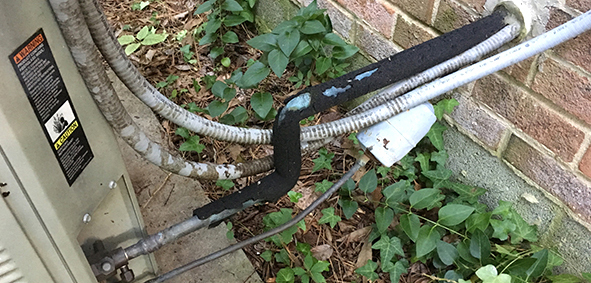
The Purpose of Insulation
Insulation serves as a thermal barrier between the interior of your home or office and the outside environment. It is designed to slow down the transfer of heat, preventing it from escaping during the winter and entering during the summer. Insulation is like a protective blanket that helps maintain a stable indoor temperature, reducing the load on your air conditioning system.
Imagine insulation as the unsung hero in the story of your home or office’s comfort and energy efficiency. Much like a guardian, it stands as a steadfast thermal barrier between the cozy indoors and the ever-changing elements outside.
In the winter months, when icy winds and biting cold seek to invade your living space, insulation acts as a resilient shield. It bravely resists the relentless push of frigid air, slowing down the escape of your precious warmth. This means that the cozy heat generated by your heating system stays right where it belongs – inside your home. It’s as if your insulation wraps your space in a warm, protective embrace, ensuring that you remain snug and comfortable, even when the weather outside is frightful.
When summer arrives with its scorching sun and sweltering temperatures, your trusted insulation doesn’t rest. It becomes your shield against the relentless assault of outdoor heat. With unwavering resolve, it thwarts the attempt of oppressive warmth to penetrate your sanctuary. In doing so, it keeps your indoor environment refreshingly cool and pleasant. You can enjoy the respite from the heat without having to overwork your air conditioning system, thus reducing energy consumption and the associated costs.
Think of insulation as your home’s or office’s secret weapon for maintaining a stable and comfortable indoor climate year-round. Without it, your heating and cooling systems would have to toil endlessly, leading to higher energy bills and a less eco-friendly footprint. But with insulation in place, your space becomes a haven of consistent temperatures, where you can relax, work or play in comfort, while also contributing to a greener and more sustainable future.
So, the next time you bask in the warmth of your home during winter or revel in the coolness of your office during summer, take a moment to appreciate the unsung hero that is insulation – the protective blanket that ensures your comfort and efficiency, no matter what the weather outside may bring.
For a comprehensive look at this subject, we invite you to read more on this dedicated page: HVAC Efficiency: How Insulation Plays a Role | HVAC | Fort Wayne, IN
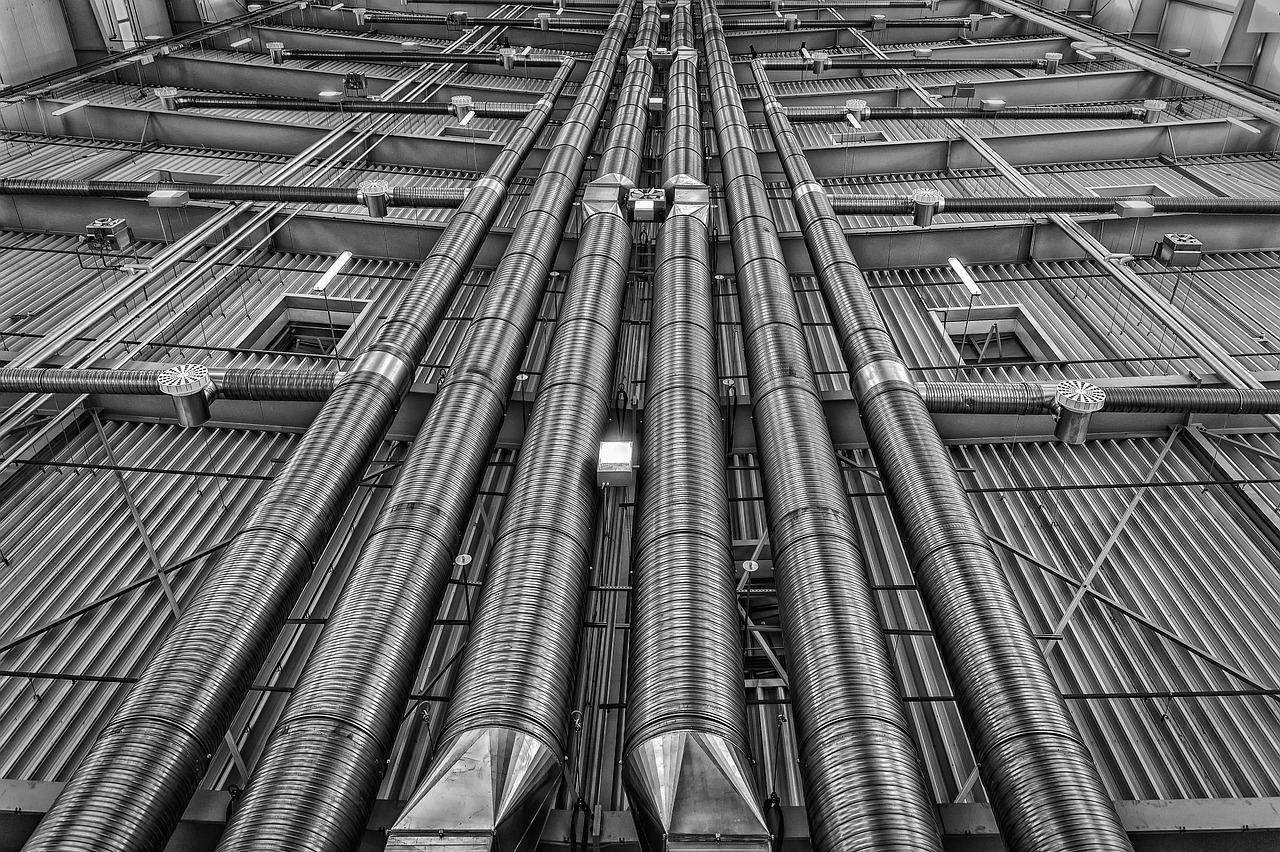
Summer Cooling and Insulation
During the scorching summer months, the sun beats down on your building, raising the external temperature significantly. Without proper insulation, this heat can easily infiltrate your indoor spaces, forcing your air conditioner to work tirelessly to combat the rising temperatures.
In the scorching summer months, the relentless sun bears down on your building, causing the external temperature to soar to uncomfortable levels. Without the shield of proper insulation, this relentless heat can swiftly infiltrate your indoor spaces, setting the stage for a battle against rising temperatures that places immense strain on your air conditioning system. Let’s delve deeper into the consequences of inadequate insulation during the summer heat and explore the solutions to this energy-draining challenge:
Increased Energy Consumption: When your building lacks adequate insulation, it essentially becomes a heat sponge, absorbing the sun’s rays and allowing them to penetrate indoors. As a result, your air conditioner has to work overtime to maintain a comfortable temperature. This increased workload translates into higher energy consumption, driving up your utility bills significantly.
Inconsistent Temperature Control: Inadequate insulation can lead to temperature inconsistencies within your building. Certain areas may become uncomfortably hot while others remain cooler. This not only compromises the comfort of occupants but also triggers a tug-of-war between those who want to turn up the AC and those who prefer a more moderate temperature, causing discomfort and disputes.
Reduced HVAC Efficiency: When your air conditioner is constantly battling against heat infiltration due to poor insulation, its efficiency takes a hit. The system struggles to reach and maintain the desired temperature, resulting in uneven cooling and increased wear and tear on the equipment. This can lead to frequent breakdowns and costly repairs.
Financial Implications: Inefficient HVAC operation due to inadequate insulation can lead to financial repercussions. Your energy bills skyrocket during the summer and the cost of repairing or replacing an overworked air conditioner can be a significant financial burden.
Environmental Impact: The increased energy consumption associated with poor insulation not only affects your finances but also contributes to a higher carbon footprint. Energy-intensive cooling systems release more greenhouse gas emissions into the atmosphere, exacerbating climate change and environmental degradation.
Occupant Discomfort: Hot and uncomfortable indoor conditions can have a negative impact on the well-being and productivity of building occupants. It can lead to decreased work efficiency, heightened stress levels and reduced overall comfort, affecting both employees and residents.
Long-Term Property Damage: Prolonged exposure to excessive heat can damage building materials, such as roofing and siding. This can result in costly repairs and maintenance to restore the structural integrity of the property.
To address these challenges and ensure a more comfortable, efficient and cost-effective indoor environment during the scorching summer months, investing in proper insulation is essential. High-quality insulation materials, including foam, fiberglass or cellulose, create a thermal barrier that prevents heat from infiltrating your building. This, in turn, reduces the workload on your air conditioner, lowers energy consumption and enhances occupant comfort.
Moreover, well-insulated buildings often qualify for energy efficiency incentives and rebates, providing financial relief and encouraging sustainability. By taking proactive steps to improve insulation, you can create a cooler, more pleasant indoor environment while reducing your environmental impact and long-term operating costs. It’s an investment that not only enhances the comfort of your space but also pays dividends in energy savings and sustainability.
To expand your knowledge on this subject, make sure to read on at this location: Pollution Prevention Tips for Energy Efficiency | US EPA
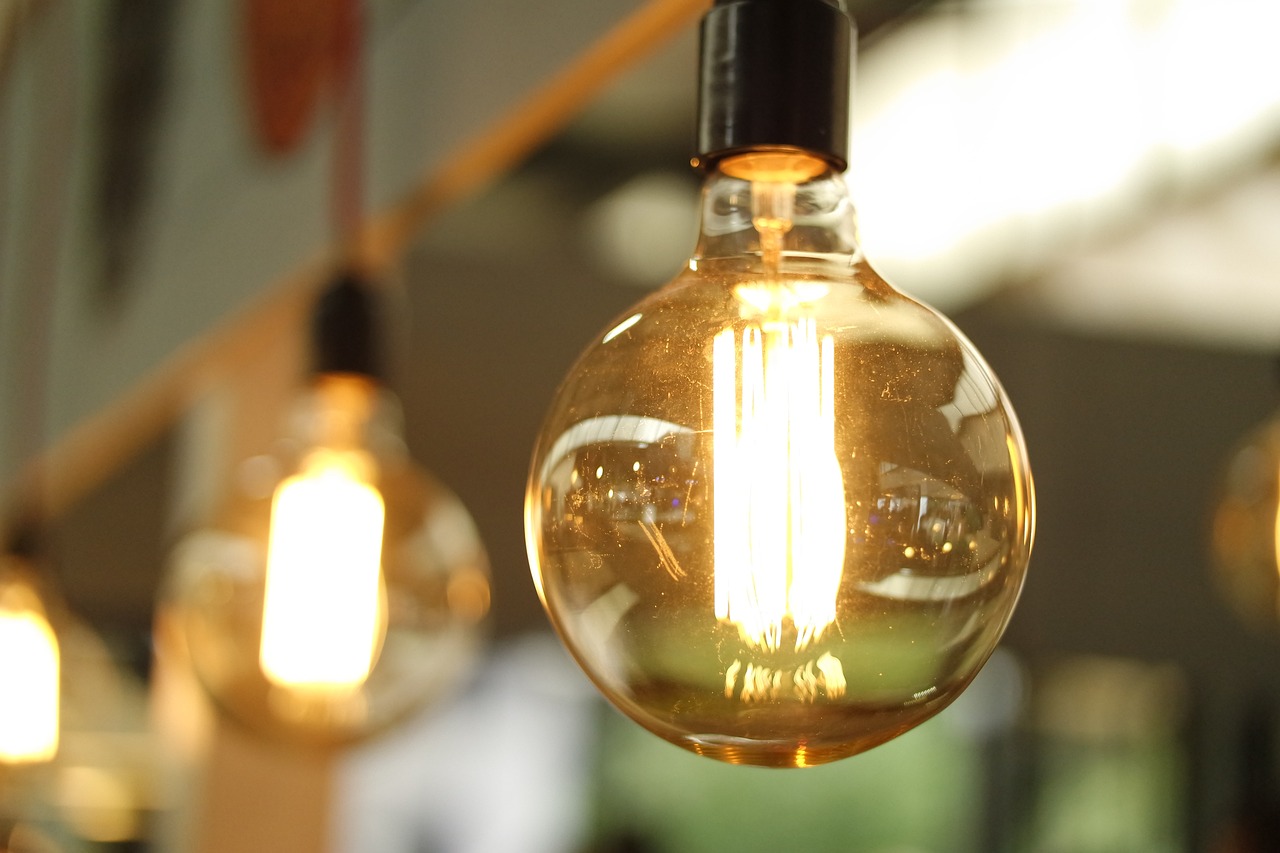
Temperature Control
Insulation helps maintain a consistent indoor temperature, allowing your air conditioner to operate more efficiently. It prevents cool air from escaping and hot air from infiltrating your home or office.
The role of insulation in maintaining a consistent indoor temperature is akin to wearing a well-insulated winter coat in cold weather. Let’s delve deeper into how insulation achieves this and why it’s essential for the efficiency of your air conditioning system:
1. Thermal Resistance:
Insulation essentially offers thermal resistance. It acts as a barrier against the transfer of heat between the interior and exterior of your building. Just as a thick coat keeps your body warm by trapping heat, insulation traps the conditioned air within your home, preventing it from escaping.
2. Preventing Cool Air Loss:
During the hot summer months, your air conditioner works diligently to lower indoor temperatures. Insulation ensures that the cool air produced by your AC remains inside your living or working spaces. It acts as a thermal envelope, minimizing the loss of conditioned air through walls, ceilings and floors.
3. Blocking Heat Infiltration:
Insulation is not a one-way barrier; it’s equally effective at blocking the infiltration of outdoor heat. When the sun beats down on your building, especially on a scorching summer day, insulation acts as a shield, preventing the outdoor heat from seeping in. This helps maintain a comfortable and consistent indoor temperature.
4. Energy Efficiency Synergy:
By preventing both cool air loss and heat infiltration, insulation reduces the workload on your air conditioning system. Your AC doesn’t have to work as hard or run as frequently to maintain the desired temperature. This translates into significant energy savings, lower electricity bills and reduced wear and tear on your HVAC equipment.
5. Comfort and Consistency:
Insulation plays a pivotal role in creating a comfortable living or working environment. Without it, indoor temperatures can fluctuate dramatically, leading to discomfort and the need for constant adjustments to your thermostat. With insulation, you can enjoy a stable and consistent indoor climate, enhancing your overall comfort.
6. Seasonal Benefits:
The benefits of insulation extend beyond the summer. During the winter months, insulation performs the reverse function, keeping heated indoor air from escaping and preventing cold outdoor air from entering. This maintains warmth and reduces heating costs, further contributing to energy efficiency.
7. Environmental Impact:
The positive effects of insulation extend to the environment. By lowering energy consumption, insulation reduces greenhouse gas emissions associated with electricity production. This makes it an eco-friendly choice, contributing to a more sustainable and greener future.
8. Return on Investment:
While investing in insulation may involve upfront costs, it’s an investment with a notable return. The energy savings over time can more than offset the initial expense, making it a cost-effective choice for homeowners and businesses alike.
In conclusion, insulation’s role in maintaining a consistent indoor temperature is integral to the efficiency of your air conditioning system and overall energy savings. It’s a silent yet powerful partner in creating a comfortable, cost-effective and eco-friendly living or working environment. As we continue to prioritize energy efficiency and sustainability, the importance of quality insulation becomes increasingly evident, offering numerous benefits for both property owners and the planet.
To expand your knowledge on this subject, make sure to read on at this location: Heating, Ventilation and Air-Conditioning Systems, Part of Indoor Air …
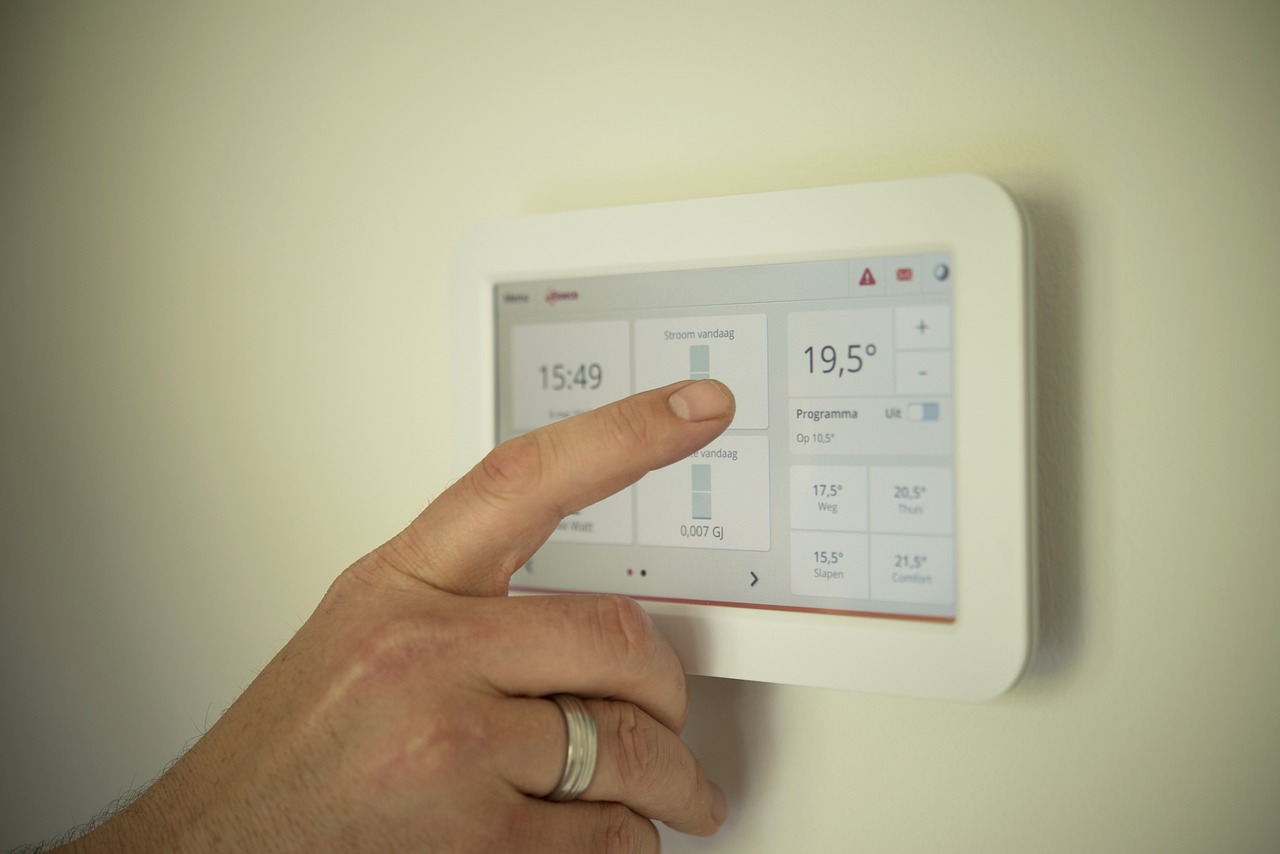
Reduced Strain
With insulation in place, your air conditioning system doesn’t have to work as hard to cool the space. This reduced strain not only prolongs the system’s lifespan but also lowers energy consumption.
Insulation is like a cozy blanket for your home, providing numerous benefits that extend well beyond just comfort. When you have proper insulation in place, your air conditioning system can operate more efficiently, making it a win-win for both your wallet and the environment.
One of the key advantages of insulation is that it creates a thermal barrier between the interior and exterior of your home. This means that during scorching summers, the heat from outside struggles to infiltrate your living space and in freezing winters, precious warmth is less likely to escape. As a result, your air conditioning system doesn’t have to work as hard to maintain a comfortable temperature indoors.
By reducing the workload on your AC unit, insulation not only prolongs its lifespan but also slashes your energy consumption. Imagine your AC as a marathon runner; without insulation, it’s constantly sprinting to keep up with temperature fluctuations, which can lead to wear and tear. However, with insulation in place, it’s more like a steady jog, conserving energy and ensuring that your system remains in good condition for years to come.
The financial benefits are evident. A well-insulated home requires less energy to stay cool, which translates into lower utility bills. Over time, the savings can be substantial and the initial investment in insulation can pay for itself many times over.
Furthermore, reducing your energy consumption through insulation contributes to a greener lifestyle. You’re not only saving money but also reducing your carbon footprint. It’s a small yet impactful step towards a more sustainable future and it’s one that anyone can take.
In conclusion, insulation is a silent hero in the realm of home efficiency. It offers a multitude of advantages, from enhanced comfort and energy savings to a reduced environmental impact. So, consider insulating your home to create a more comfortable, cost-effective and eco-friendly living space.
For a comprehensive look at this subject, we invite you to read more on this dedicated page: The Role of HVAC Insulation in Energy-Efficient Homes

The Winter Role
While insulation is often associated with keeping buildings cool in the summer, it is equally important during the winter. In colder months, insulation helps retain heat inside, preventing it from escaping and keeping your space warm. An effectively insulated building reduces the need for excessive heating, resulting in energy savings.
The role of insulation in creating a comfortable and energy-efficient indoor environment goes beyond just keeping buildings cool in the summer. In fact, its significance becomes even more pronounced during the colder winter months, where insulation becomes your stalwart ally in conserving heat and enhancing overall comfort. Here’s a deeper dive into the importance of insulation in winter:
Year-Round Comfort: Insulation ensures that your indoor spaces remain comfortable throughout the year. During winter, it acts as a thermal barrier, preventing the frigid outdoor temperatures from penetrating your walls, ceilings and floors. This means cozy, warm interiors that are a welcome respite from the cold.
Heat Retention: In cold weather, the heat generated by your heating system is a precious resource. Insulation helps to retain this heat inside your building, preventing it from escaping through walls and ceilings. This means less reliance on heating systems to maintain a comfortable temperature, ultimately leading to energy savings.
Energy Efficiency: An effectively insulated building translates into improved energy efficiency. With less heat loss, your heating system doesn’t have to work as hard to maintain the desired indoor temperature. As a result, you’ll notice a reduction in your energy bills, which is not only cost-effective but also environmentally responsible.
Reduced Carbon Footprint: Lower energy consumption due to insulation means a reduced carbon footprint. By minimizing the need for excessive heating, you’re actively contributing to environmental sustainability and helping combat climate change.
Moisture Control: Insulation also plays a role in controlling moisture levels within your building. During winter, it helps prevent condensation and moisture buildup, which can lead to issues like mold and mildew growth. This not only protects your health but also the integrity of your property.
Sound Insulation: In addition to thermal benefits, insulation provides acoustic insulation, reducing noise transfer between rooms and from outside. This is particularly important during the winter months when we tend to spend more time indoors.
Property Preservation: Insulation can protect your property from the harsh effects of winter weather. It helps prevent issues like frozen pipes and ice dam formation on roofs, which can cause costly damage.
Long-Term Investment: Proper insulation is a long-term investment in your property’s value. It enhances the durability and longevity of your building by reducing wear and tear caused by extreme temperature fluctuations.
Local Regulations and Building Codes: Many building codes and regulations mandate specific insulation standards. Ensuring your property complies with these standards is not only essential for safety and comfort but also for maintaining its resale value.
Resale Value: Well-insulated homes are often more attractive to potential buyers. The knowledge that a property is energy-efficient and comfortable can significantly boost its resale value.
In summary, while insulation might not always be visible, its impact on the comfort, energy efficiency and sustainability of your home or building is profound. By focusing on insulation as a year-round necessity, you’re not only ensuring your personal comfort but also making a responsible and environmentally conscious choice for the long term.
To expand your knowledge on this subject, make sure to read on at this location: The Role of HVAC Insulation in Energy-Efficient Homes

Types of Insulation
There are various types of insulation materials, each with its advantages. Common options include fiberglass, cellulose, foam and reflective barriers. The choice of insulation depends on factors such as the climate, building structure and budget.
The selection of insulation materials is a critical decision in any construction or renovation project and it’s essential to weigh the pros and cons of each option to align them with specific needs and constraints. Here, we delve deeper into the various types of insulation materials and explore how they cater to different requirements:
Fiberglass Insulation: This widely used insulation material is known for its affordability and versatility. Fiberglass insulation comes in two primary forms: batts and blown-in. Batts are pre-cut panels that fit snugly between wall studs and ceiling joists, while blown-in fiberglass consists of loose fibers that are blown into cavities. Its resistance to heat flow makes it effective in regulating indoor temperatures. Fiberglass insulation is often the go-to choice when budget considerations are paramount.
Cellulose Insulation: Made from recycled paper products, cellulose insulation is an environmentally friendly option. It is treated with fire retardants to enhance safety. Cellulose insulation excels in its ability to fill nooks, crannies and wall cavities effectively, making it an excellent choice for retrofitting or insulating irregular spaces. It provides thermal and acoustic insulation, contributing to both energy efficiency and sound reduction.
Foam Insulation: Foam insulation materials include both spray foam and rigid foam board. Spray foam expands upon application, sealing gaps and forming an airtight barrier. Rigid foam boards offer high insulation values and are often used in exterior sheathing or under roofing. Foam insulation is highly effective in preventing air infiltration and offers superior energy efficiency. However, it tends to be more expensive than other options.
Reflective Barriers: Reflective insulation, often found in the form of foil-faced materials, works by reflecting radiant heat rather than absorbing it. This type of insulation is particularly beneficial in hot climates, where it helps keep buildings cooler by reducing heat gain. It’s commonly used in attics and under roofs to reflect solar radiation.
Factors to Consider:
Climate: The climate in your region plays a crucial role in determining the best insulation material. For instance, cold climates may require high R-value insulation to prevent heat loss, while hot climates may benefit from reflective barriers to minimize heat gain.
Building Structure: The design and structure of your building affect insulation choices. Some materials are better suited for specific applications, such as insulating walls, roofs or crawl spaces. The availability of space and accessibility also impact the selection.
Budget: Budget considerations are essential. Fiberglass insulation, for example, is typically more budget-friendly, making it a popular choice for many projects. Foam insulation tends to have a higher upfront cost but offers significant energy savings over time.
Environmental Impact: If environmental sustainability is a priority, consider materials with recycled content or those that have minimal environmental impact, such as cellulose insulation.
In conclusion, the choice of insulation material should be a well-informed decision that aligns with your specific needs, climate conditions, building structure and budget. Each material offers its unique advantages and selecting the right one can have a significant impact on energy efficiency, comfort and long-term building performance.
If you’d like to dive deeper into this subject, there’s more to discover on this page: Energy Efficiency: Buildings and Industry | Department of Energy
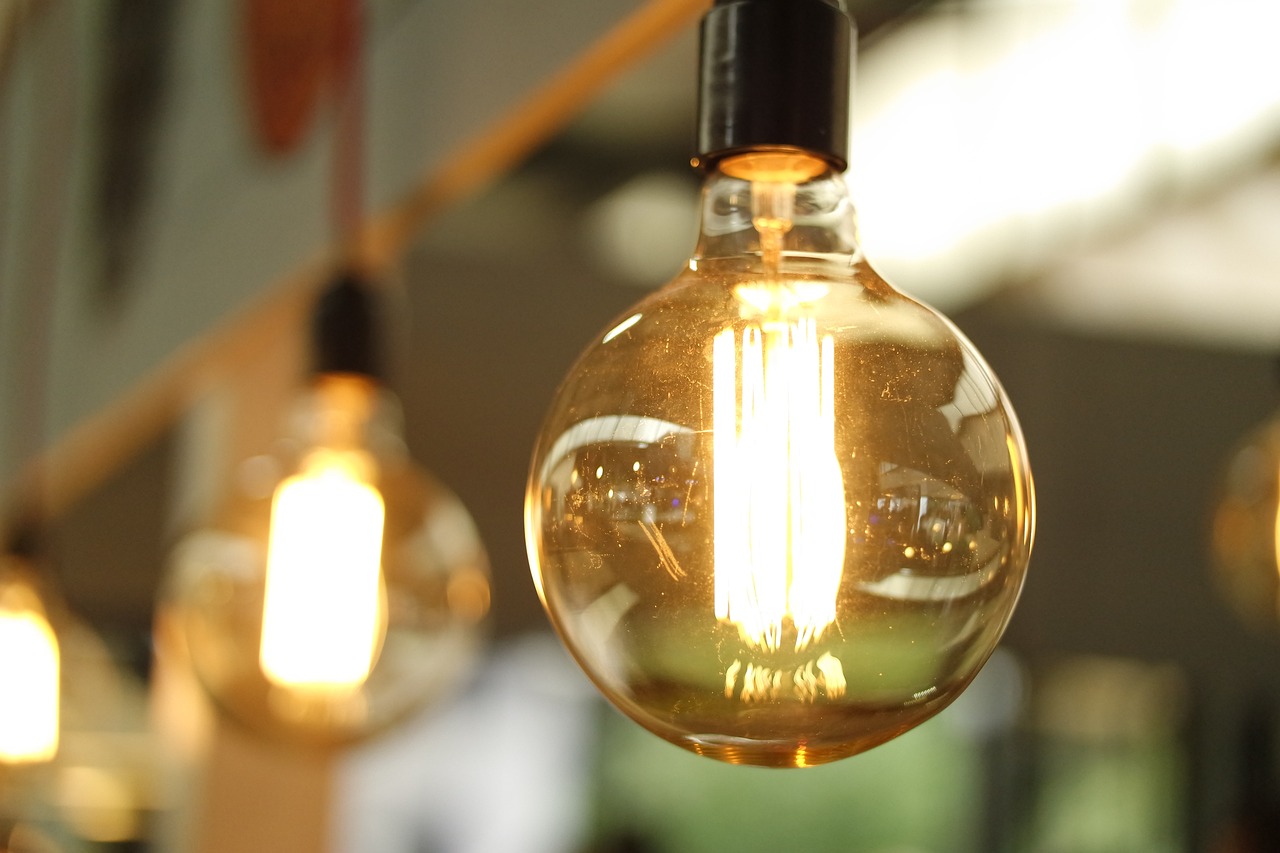
Proper Installation Matters
The effectiveness of insulation is highly dependent on proper installation. Gaps, seams and inadequate coverage can compromise its performance. Therefore, it’s essential to hire experienced professionals to ensure insulation is installed correctly and consistently throughout the building.
The importance of proper insulation installation cannot be overstated when it comes to optimizing a building’s energy efficiency and comfort. Insulation serves as a vital barrier that regulates heat flow, keeping interiors warm in winter and cool in summer. However, its effectiveness hinges on the meticulousness of its installation, making it imperative to entrust this task to experienced professionals.
One of the most common pitfalls in insulation projects is the presence of gaps or seams. Even a small opening can allow unwanted heat exchange, rendering the insulation less effective. An experienced insulation contractor understands the criticality of sealing every nook and cranny, ensuring a seamless thermal envelope that shields the interior from external temperature fluctuations. This meticulous approach significantly contributes to maintaining a consistent and comfortable indoor climate.
Inadequate coverage is another pitfall that can compromise insulation’s performance. Ample and uniform coverage is essential to achieve the desired level of thermal resistance (often measured as R-value). Professionals well-versed in insulation understand the specific requirements for different building types and climates, ensuring that insulation is neither overdone nor insufficient, striking the perfect balance for energy efficiency.
Moreover, the choice of insulation material is crucial and experienced installers can recommend the most suitable options based on the building’s design and needs. Whether it’s fiberglass, foam, cellulose or another material, professionals can guide homeowners and builders toward the best choice for optimal performance.
Professionals also understand the importance of safety during insulation installation, especially in projects involving materials like fiberglass or spray foam. They are equipped with the necessary protective gear and are well-trained in handling these materials, minimizing health risks associated with improper installation.
Lastly, hiring experienced insulation professionals often comes with the added benefit of warranties and guarantees. Should any issues arise with the insulation system down the line, you have recourse to address them, giving you peace of mind and assurance that your investment in insulation will continue to deliver energy savings and comfort for years to come.
In summary, proper insulation installation is the linchpin of an energy-efficient and comfortable building. Hiring experienced professionals ensures that insulation is seamlessly integrated, free from gaps or seams and optimally matched to your building’s needs and design. It’s an investment that not only pays off in reduced energy bills but also in creating a consistently comfortable and cozy indoor environment throughout the seasons.
Additionally, you can find further information on this topic by visiting this page: Insulation | Department of Energy
The Cost-Efficiency Equation
While investing in insulation may incur upfront costs, it’s a long-term investment that pays off in terms of energy savings. Lower energy bills, reduced wear and tear on your HVAC system and increased property value make insulation a cost-effective choice.
Investing in insulation for your home or property is like planting a tree that continues to grow in value over time. While the initial expenditure may give pause, it’s essential to recognize that insulation is a long-term investment that yields numerous tangible benefits, ultimately proving its worth many times over.
1. Energy Savings for Years to Come: Insulation acts as a thermal barrier, effectively trapping the desired temperature inside your living spaces while preventing outdoor temperatures from infiltrating. This means your heating and cooling systems don’t have to work as hard to maintain a comfortable interior environment. As a result, you’ll enjoy lower energy bills month after month and these savings accumulate over the years. Over time, the amount you save on energy costs can significantly outweigh the initial investment in insulation.
2. Reduced HVAC Wear and Tear: Insulation is like a shield for your HVAC system. By stabilizing indoor temperatures, it reduces the frequency and intensity of heating and cooling cycles. This lessens the wear and tear on your HVAC equipment, extending its lifespan and reducing maintenance and repair costs. Fewer breakdowns and a longer-lasting system translate into substantial savings over the years.
3. Increased Property Value: A well-insulated property is not only more energy-efficient but also more attractive to potential buyers or renters. When it comes time to sell or lease your property, its energy efficiency can be a strong selling point, potentially fetching a higher price or rental income. Savvy buyers and tenants often prioritize properties with lower energy bills, which means your investment in insulation can boost your property’s overall value.
4. Enhanced Comfort and Quality of Life: Insulation isn’t just about financial gains; it also enhances your quality of life. A well-insulated home maintains consistent indoor temperatures, ensuring comfort year-round. No more dealing with drafts, hot spots or chilly corners. It provides a cozy, inviting atmosphere that fosters a more enjoyable living experience for you and your family.
5. Environmental Benefits: Investing in insulation isn’t just about personal gains; it’s also an environmentally responsible choice. By reducing your energy consumption, you’re decreasing your carbon footprint and contributing to a greener, more sustainable future. This commitment to energy efficiency aligns with the global push for eco-friendly practices and can make you feel good about your contribution to the planet’s well-being.
In conclusion, while the upfront costs of insulation may give pause, it’s vital to view this investment as a wise, long-term decision. The combination of ongoing energy savings, reduced HVAC expenses, increased property value, enhanced comfort and environmental benefits make insulation a cost-effective choice that not only pays off financially but also enriches your overall quality of life. So, when considering insulation, think of it as an investment that keeps on giving, season after season, year after year.
To expand your knowledge on this subject, make sure to read on at this location: Heating, Ventilation and Air-Conditioning Systems, Part of Indoor Air …
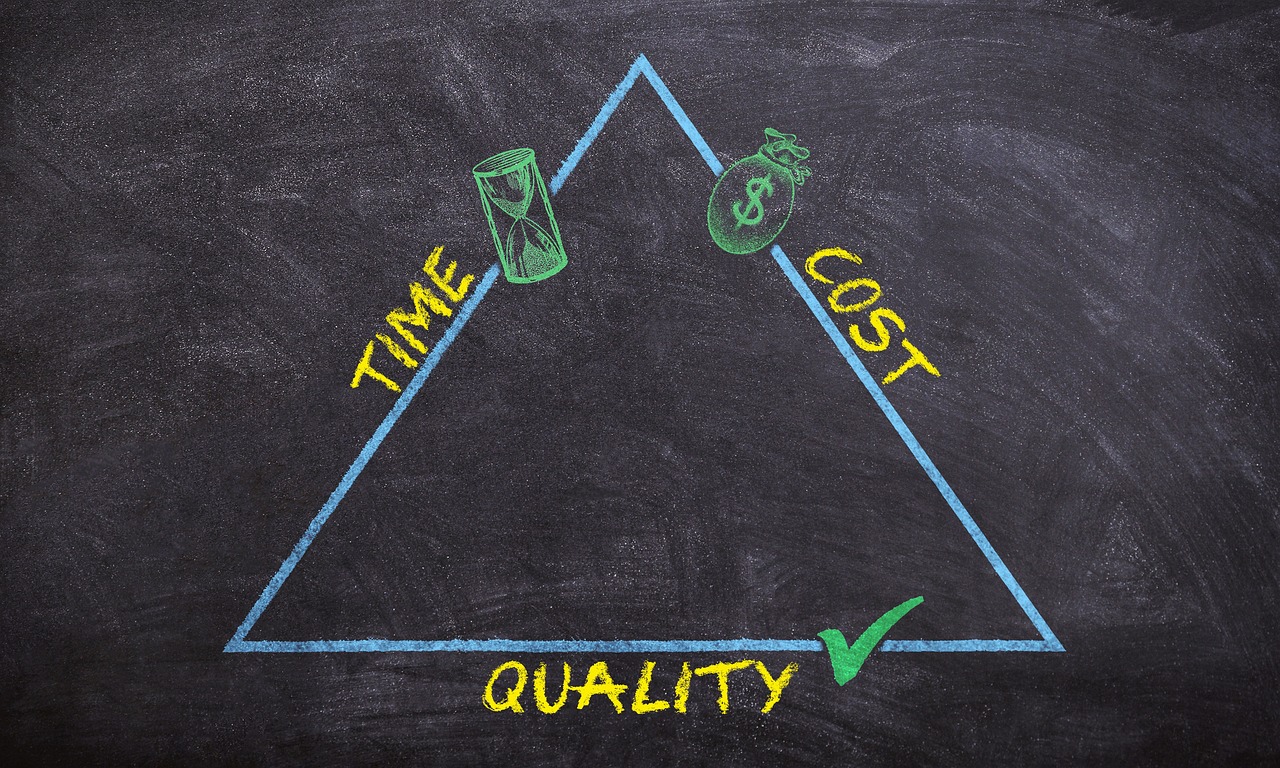
Environmental Benefits
Insulation not only benefits your wallet but also the environment. By reducing energy consumption, you lower greenhouse gas emissions associated with electricity generation, contributing to a greener and more sustainable future.
Insulation is a win-win solution, benefiting both your finances and the planet. Its impact extends far beyond just saving you money; it plays a crucial role in environmental conservation by significantly reducing your carbon footprint and promoting a more sustainable future.
When your home is well-insulated, it acts as a formidable barrier against temperature extremes. This means you rely less on heating and cooling systems to maintain a comfortable indoor climate. As a result, your energy consumption decreases and this reduction in energy use directly translates into lower greenhouse gas emissions.
By consuming less electricity for heating or cooling, you indirectly contribute to a substantial decrease in the demand for energy generation. Many power plants rely on fossil fuels, such as coal or natural gas, which release harmful greenhouse gases like carbon dioxide when burned. Less demand for energy means fewer emissions from these power sources, making a significant dent in the overall carbon emissions associated with electricity production.
Furthermore, insulation’s positive environmental impact isn’t limited to its reduction of greenhouse gases. It also conserves natural resources by decreasing the need for additional energy production infrastructure. Fewer power plants and fewer resources consumed in the generation process mean less environmental disruption, from mining for raw materials to habitat destruction.
Additionally, by reducing your reliance on energy-consuming systems, insulation indirectly supports the growth of cleaner, more sustainable energy sources, such as solar and wind power. As demand for fossil fuels decreases, the economic incentives for investing in renewable energy alternatives grow stronger, further accelerating the transition to a greener energy landscape.
So, when you invest in insulation for your home or property, you’re not only making a sound financial decision but also playing a vital role in mitigating climate change. You’re helping to create a more eco-friendly world by curbing greenhouse gas emissions, conserving resources and fostering the shift toward cleaner energy sources. In essence, insulation is a practical and eco-conscious choice that aligns your comfort and financial goals with a brighter, more sustainable future for all.
Should you desire more in-depth information, it’s available for your perusal on this page: Heating, Ventilation and Air-Conditioning Systems, Part of Indoor Air …
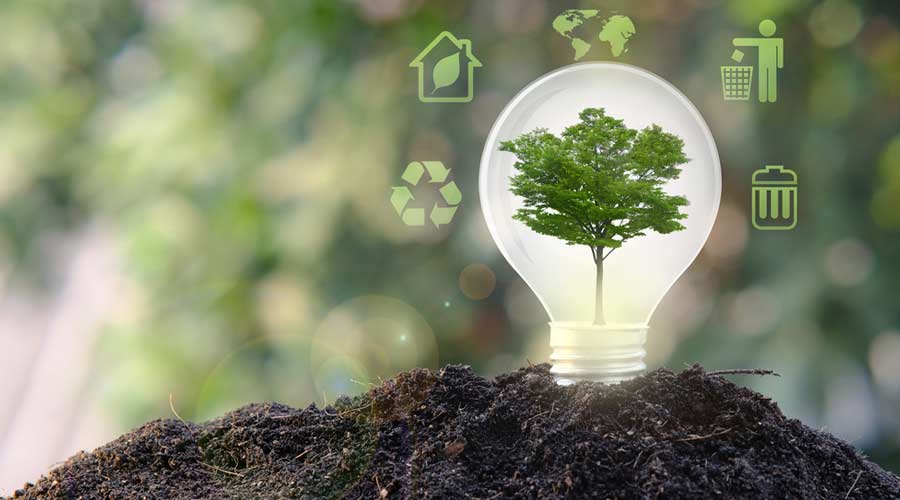
Continuous Improvement
As technology evolves, insulation materials and techniques are continually improving. Today, there are more efficient and eco-friendly insulation options available, allowing homeowners and businesses to further enhance their energy efficiency and reduce their carbon footprint.
The evolution of insulation materials and techniques represents a promising avenue for homeowners and businesses to embrace energy efficiency and sustainability in their building practices. In this era of technological advancement, the insulation industry has made significant strides, offering a range of innovative solutions that not only boost thermal performance but also align with eco-friendly principles. Here’s a deeper exploration of how modern insulation options contribute to enhanced energy efficiency and a reduced carbon footprint:
Advanced Insulation Materials: Modern insulation materials are designed to provide superior thermal resistance while remaining environmentally responsible. High-performance materials like aerogel, recycled denim and cellulose insulation made from recycled paper are gaining popularity. These materials offer excellent insulation properties without resorting to harmful chemicals or excessive resource consumption.
Higher R-Values: The insulation industry has introduced materials with higher R-values, which measure thermal resistance. This means that today’s insulation can effectively block heat transfer and maintain stable indoor temperatures, reducing the need for heating and cooling. Homes and buildings stay comfortable year-round with less energy expenditure.
Eco-Friendly Options: Insulation materials are increasingly being sourced from sustainable and recycled materials. For example, some insulation products use recycled glass or even natural materials like cork. These eco-friendly choices help reduce waste and minimize the environmental impact of insulation production.
Energy Efficiency: Upgrading insulation to more efficient options results in reduced energy consumption. This not only lowers utility bills but also decreases greenhouse gas emissions associated with energy production. It’s a win-win for cost savings and environmental preservation.
Sealing and Air Tightness: Modern insulation techniques emphasize proper sealing and air tightness. Combined with advanced insulation materials, this approach prevents drafts and heat loss, ensuring that conditioned air remains inside the building. This translates to consistent comfort and reduced energy waste.
Government Incentives: Many governments and local authorities offer incentives and rebates for energy-efficient insulation upgrades. These financial incentives encourage homeowners and businesses to invest in improved insulation, making it a more economically viable choice.
Long-Term Savings: While upgrading insulation may entail an initial investment, the long-term savings in energy costs more than offset the upfront expense. Over time, the reduced energy consumption pays dividends and helps recoup the initial investment.
Indoor Air Quality: Some modern insulation materials contribute to improved indoor air quality by resisting mold growth and providing an effective barrier against allergens and pollutants.
Sustainability Certifications: Look for insulation products with sustainability certifications such as GREENGUARD or ENERGY STAR. These certifications provide assurance that the insulation meets specific environmental and performance standards.
In conclusion, the continuous evolution of insulation materials and techniques has opened doors to enhanced energy efficiency and environmental responsibility. By upgrading insulation with modern, eco-friendly options, homeowners and businesses can enjoy improved thermal performance, lower energy bills and a reduced carbon footprint. It’s a tangible and sustainable way to contribute to a greener future while reaping financial benefits in the process.
Explore this link for a more extensive examination of the topic: Rural Energy for America Program Renewable Energy Systems …

The role of insulation in effective air conditioning and energy efficiency cannot be overstated. It acts as a vital partner to your air conditioning system, helping maintain a comfortable indoor environment while reducing energy consumption and costs. Whether you’re looking to upgrade your existing insulation or considering insulation for a new construction project, making the right choice can lead to a more comfortable, cost-effective and environmentally friendly living or working space.
The importance of insulation in the realm of effective air conditioning and energy efficiency is truly paramount. It serves as an indispensable ally to your air conditioning system, playing a pivotal role in creating and sustaining a comfortable indoor environment while simultaneously curbing energy consumption and associated costs. Whether you’re contemplating an upgrade to your current insulation setup or weighing the options for insulation in a new construction project, making a well-informed choice can pave the way for a living or working space that is not only more comfortable but also economically and environmentally sustainable. Here’s why insulation is the unsung hero in the pursuit of these goals:
Thermal Control: Insulation forms a thermal barrier that helps regulate indoor temperatures. During hot summer months, it prevents the intrusion of outdoor heat, allowing your air conditioner to operate efficiently and maintain a cooler indoor climate. Conversely, in colder seasons, insulation retains heat, reducing the workload on your heating system.
Energy Efficiency: Proper insulation significantly reduces the need for constant heating or cooling, which translates to lower energy consumption. This, in turn, leads to decreased utility bills and a reduced carbon footprint, contributing to a greener and more sustainable living or working space.
Consistent Comfort: Insulation ensures that indoor temperatures remain consistent, avoiding uncomfortable temperature fluctuations. It creates a stable and pleasant environment, improving overall comfort and well-being for occupants.
Sound Dampening: Beyond temperature control, insulation also acts as a sound barrier. It helps muffle external noises, creating a quieter and more serene indoor space. This is particularly valuable for homes and businesses located in noisy urban areas.
Moisture Control: Insulation materials with moisture-resistant properties can help prevent condensation and moisture buildup within walls and ceilings. This can mitigate the risk of mold growth and structural damage while maintaining air quality.
Long-Term Savings: While the initial investment in quality insulation may seem significant, it pays off in the long run. The energy savings and reduced maintenance costs often outweigh the upfront expense, making insulation a sound financial decision.
Environmental Impact: Using eco-friendly insulation materials, such as recycled or sustainable options, can further minimize your environmental footprint. It aligns with sustainability goals and contributes to a healthier planet.
Building Code Compliance: Many building codes require proper insulation to meet energy efficiency standards. Ensuring your property complies with these regulations can enhance its resale value and marketability.
Improved Property Value: A well-insulated home or commercial building is an attractive selling point for potential buyers or tenants. It enhances property value and can lead to a quicker sale or lease agreement.
In conclusion, insulation is an unsung hero in the quest for effective air conditioning, energy efficiency and overall comfort. It plays a multifaceted role by controlling temperature, reducing energy consumption, providing acoustic comfort and offering long-term savings. When you choose the right insulation materials and ensure proper installation, you not only create a more comfortable living or working space but also contribute to a more sustainable and cost-effective future.
Don’t stop here; you can continue your exploration by following this link for more details: Heating, Ventilation and Air-Conditioning Systems, Part of Indoor Air …
More links
Explore this link for a more extensive examination of the topic: Insulation | Department of Energy
